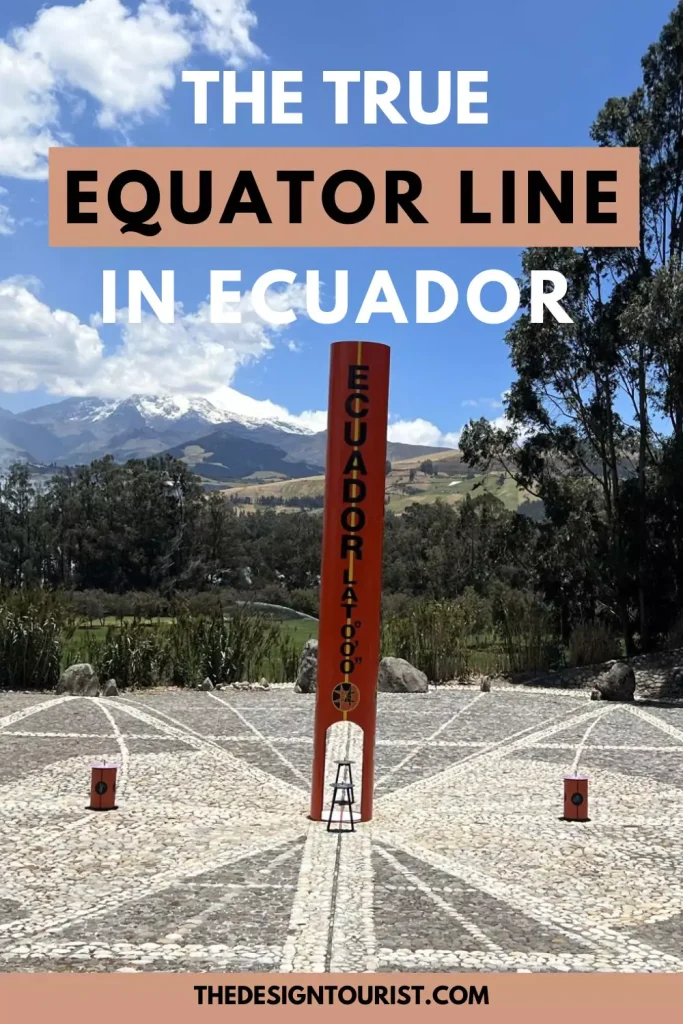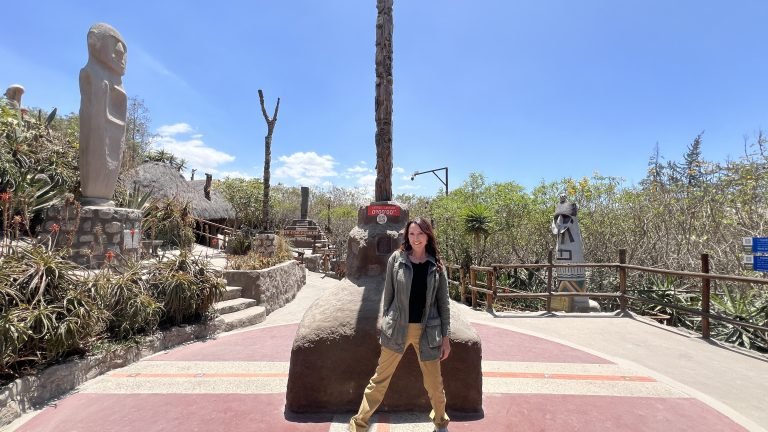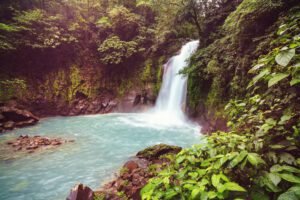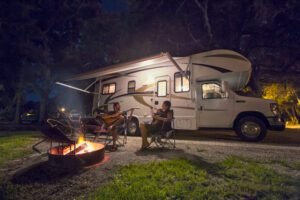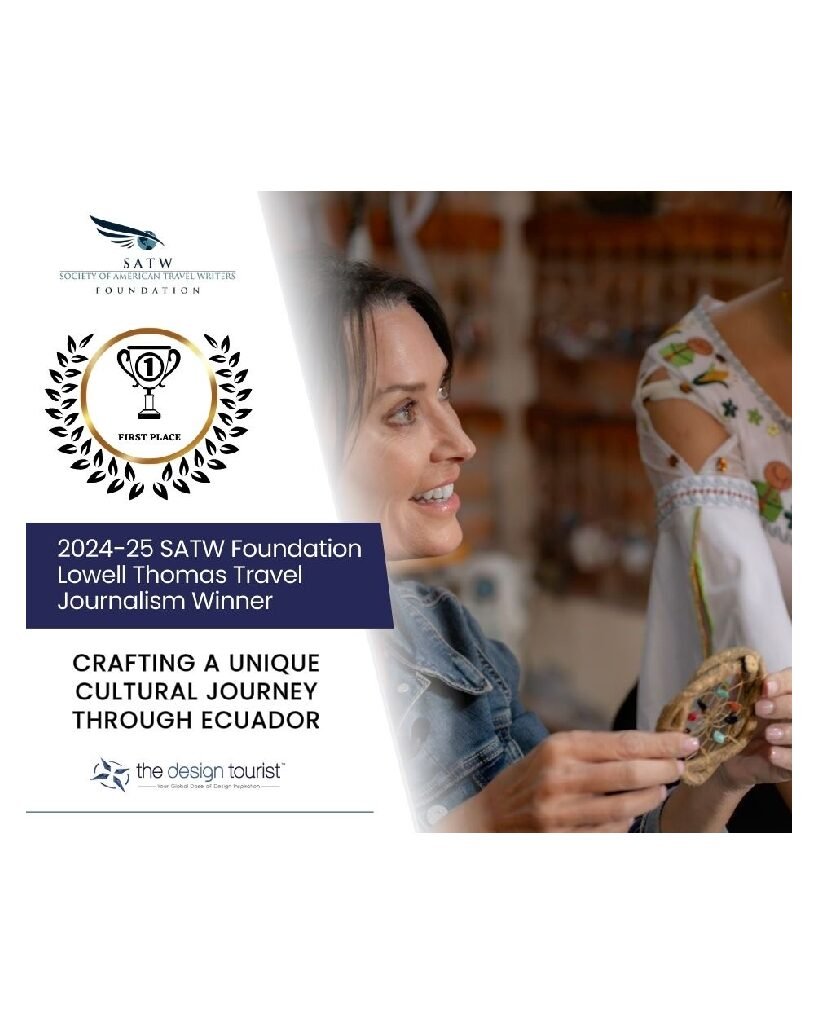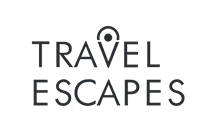Table of Contents
Key Take-Aways
- Learn about gravitational forces, the Coriolis effect, and why you weigh less at the equator.
- Discover the rich traditions of Ecuador’s indigenous communities, from the Quitu-Cara to the Shuar and Worani tribes.
- Explore the contributions of the French Geodesic Mission and its role in shaping our understanding of the Earth.
- Participate in hands-on activities like balancing an egg on a nail and walking the equator line.
- Marvel at the cosmos from the unique vantage point of the equator.
Ecuadorians view their country based on the principles of equilibrium and reciprocity, where balance resides in opposing forces of nature. Visiting equator line in Ecuador is a physical manifestation of this cultural belief.
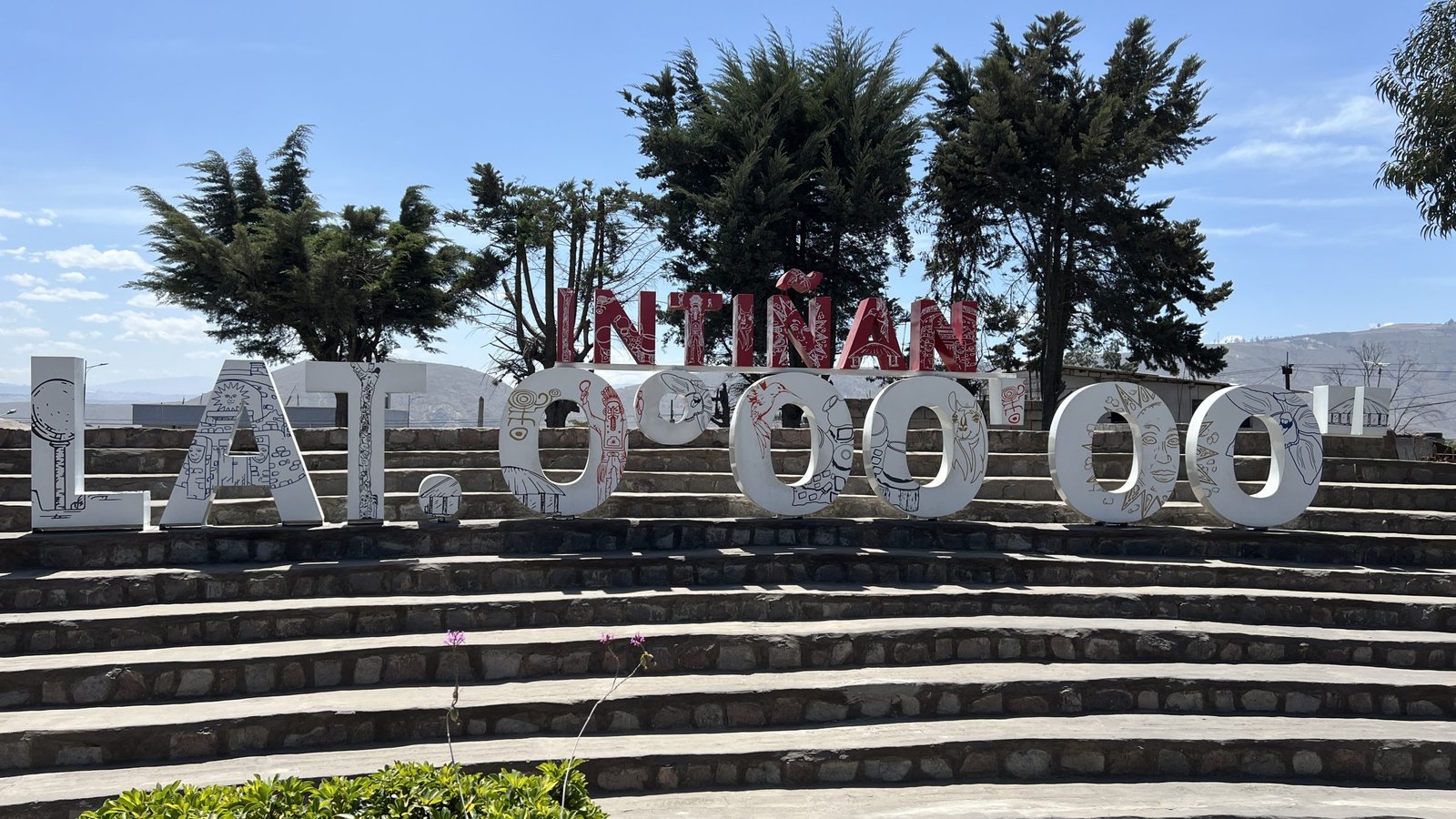
I’m standing at Ecuador’s equator line and instantly lost a half pound. It’s scientifically verified that my weight, 113 pounds at the poles, weighs approximately 112.435 pounds at the equator. The instant weight loss is due to the combined effects of Earth’s rotation and its equatorial bulge, which decrease the effective gravitational pull at the equator.

Why Do You Weigh Less at the Equator?
The centrifugal force from Earth’s rotation is strongest at the equator and acts outward, opposing gravity and effectively reducing your weight. The Earth’s rotation also causes the equator to bulge, making the planet’s radius there about 13 miles larger than at the poles. This increased distance from Earth’s center means gravity’s pull is slightly weaker at the equator, reducing your weight. These combined equatorial phenomena result in a weight difference of approximately 0.5%.
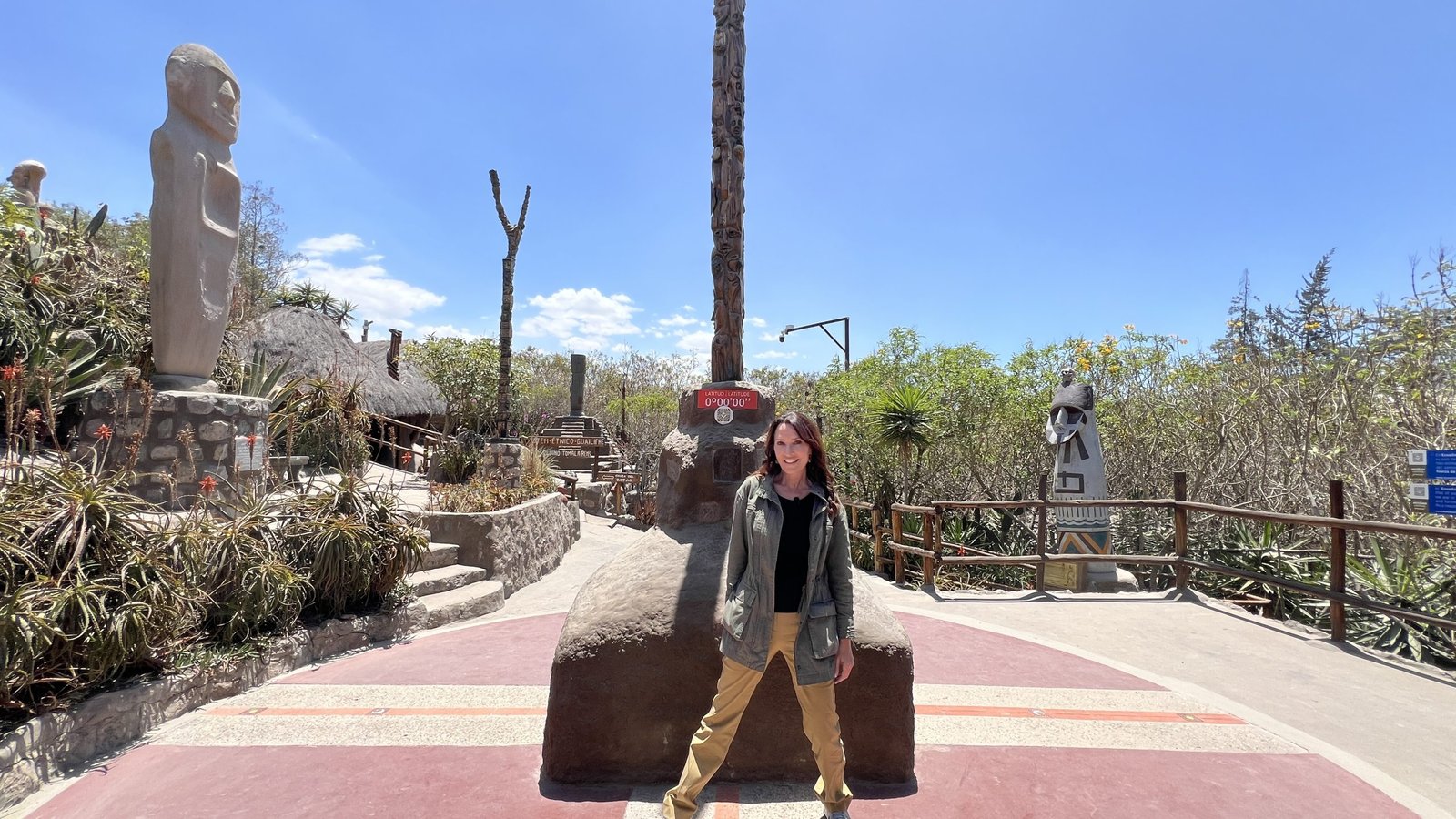
I regret not wearing my skinny jeans while searching for the actual equator line in Ecuador along the country’s archaeo-astronomic routes.
My exploration leads me to two of Ecuador’s competing equatorial line attractions:
Exploring Ecuador’s Equatorial Landmarks
1. Intiñan Solar Museum
The Intiñan Solar Museum, close to Quito, claims to sit at 0° latitude, and the Quitsato Solar Museum, which says it resides at latitude 0º 0′ 0” the most accurate location of the equator line, verifiable by GPS.

Both attractions are worth visiting for unique experiences, if not geographic accuracy. The indisputable fact is that Ecuador sits in the middle of the world, verified by a team in the 18th century from the French Academy of Sciences. The French Geodesic Mission, led by Charles Marie de La Condamine, Pierre Bouguer, and Louis Godin, arrived in present-day Ecuador in 1736 to measure a degree of latitude at the equator.
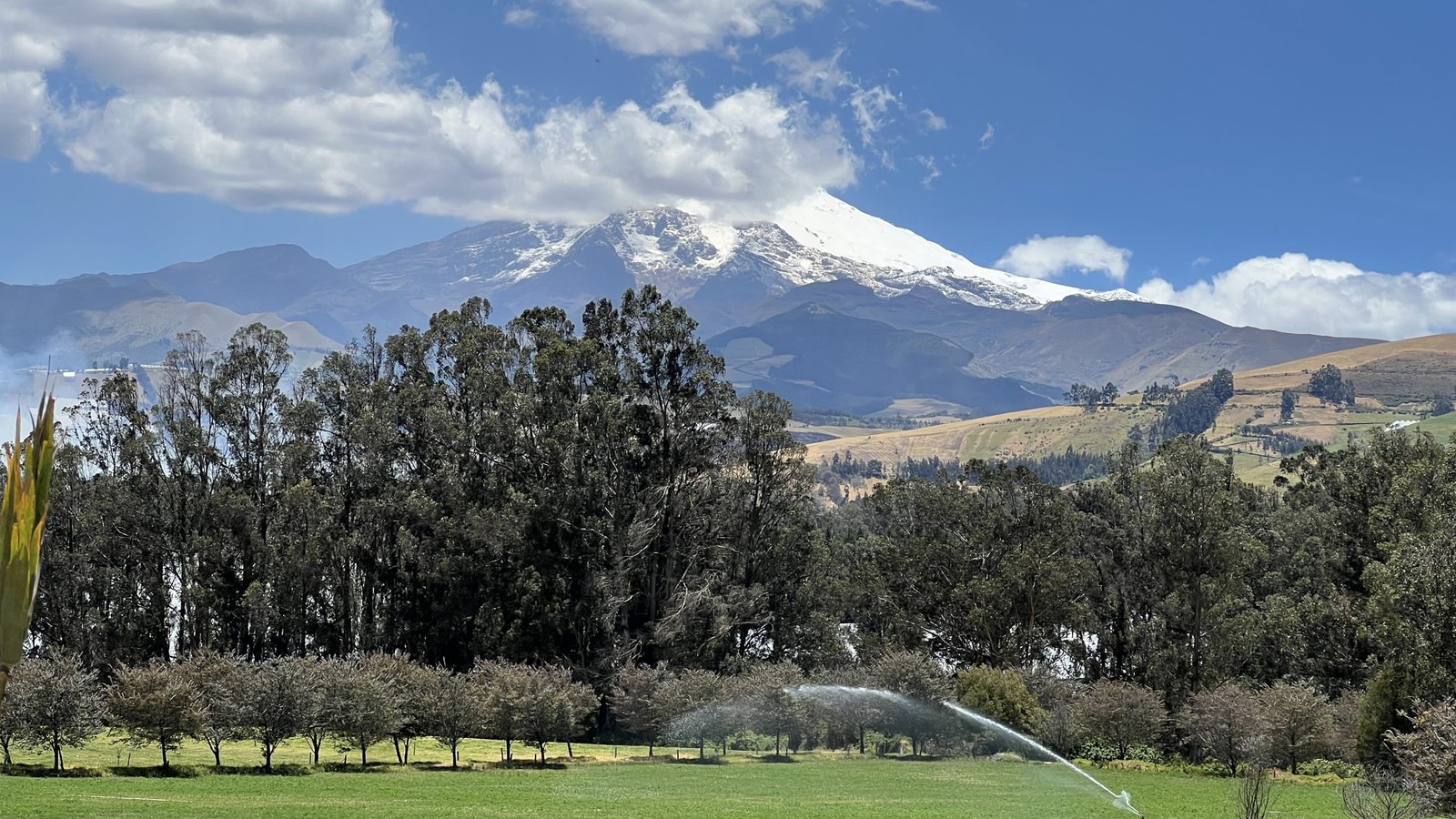
Their work aimed to determine Earth’s shape by verifying Isaac Newton’s theory that the planet is flattened at the poles and bulges at the equator. They chose Ecuador to carry out their mission because they could triangulate measurements from the country’s Andean mountains. The French measured the equator’s location from summit to summit in a triangulation process using yards as the unit of measurement. My guide explains that one yard represented the length from the French King’s chest to the arm; hence, it was imperfect. It was based on the king’s size.
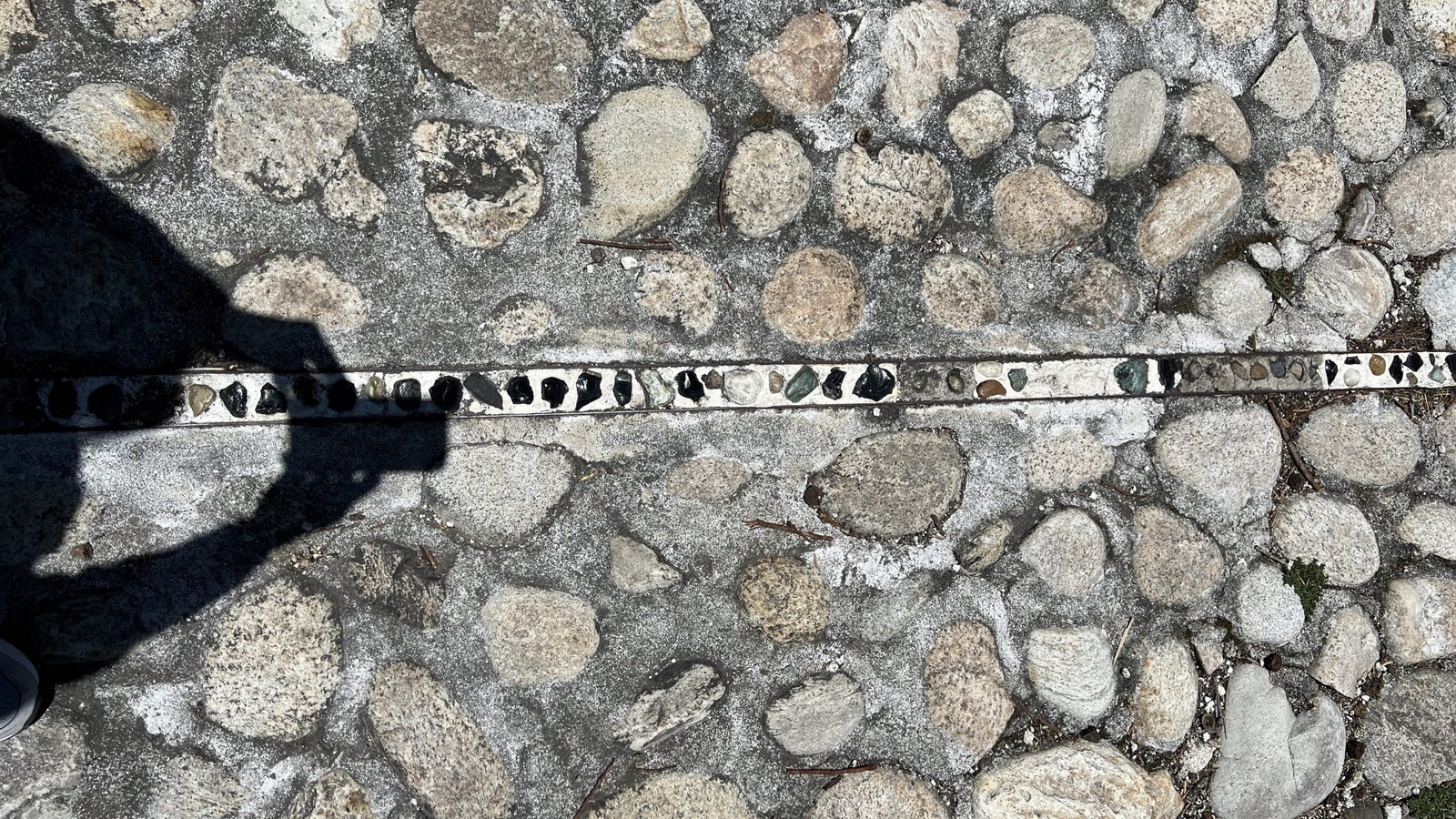
The equator is an imaginary line that divides the world into the North and South hemispheres. It runs through Ecuador, Brazil, Africa, China, and Indonesia. Thirteen countries reside on the equator. Ecuador is the only country with higher elevations due to its mountains, which is why the French team came to Quito to measure the equator.
Before the French expedition, indigenous cultures in the region, such as the Quitu-Cara, had already recognized and marked the equatorial line. The Catequilla archaeological site, for instance, is situated precisely on the equator, indicating advanced pre-Columbian astronomy.
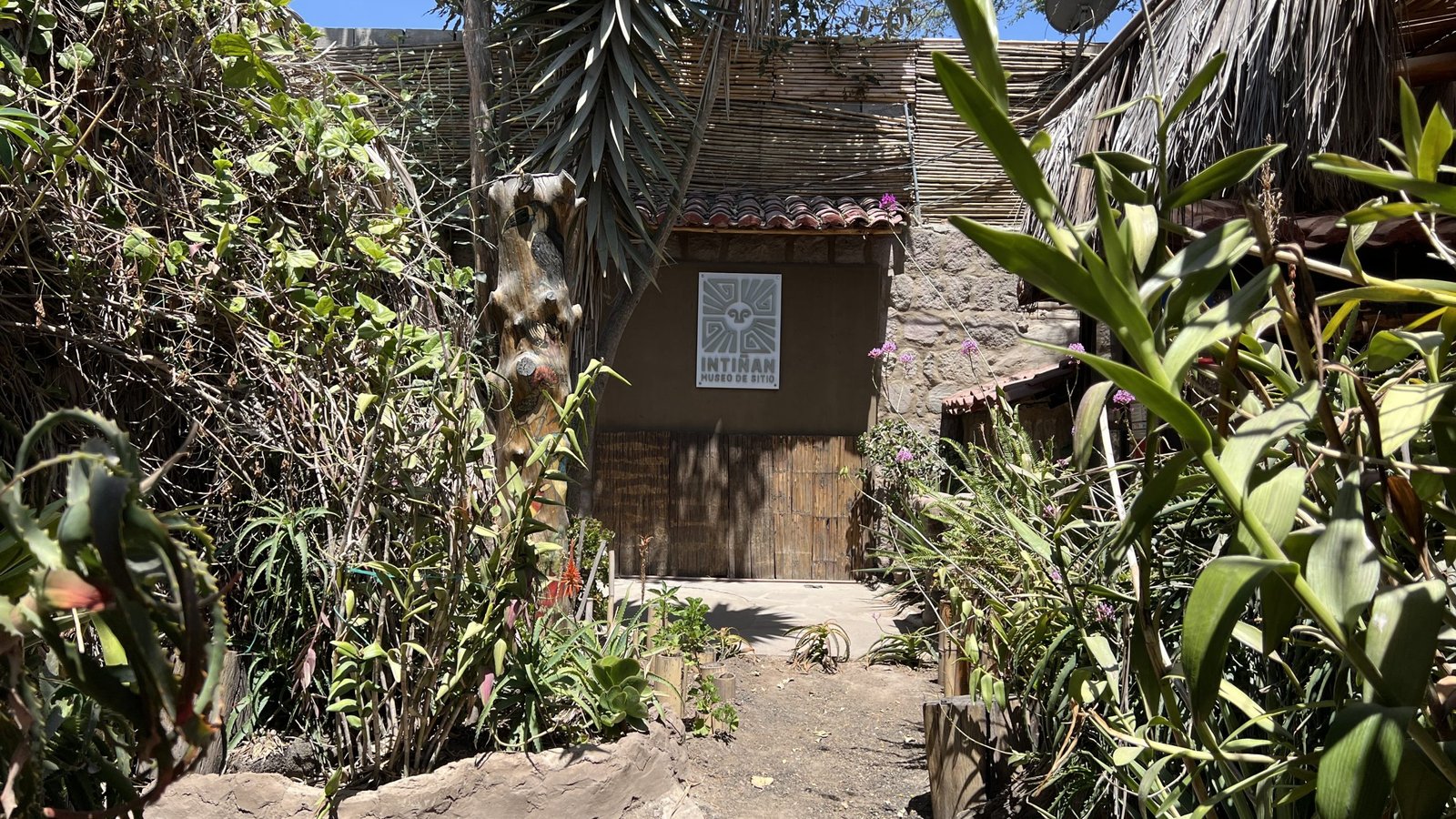
My first stop is the Intiñan Solar Museum, which reminds me of an equatorial theme park. It features exhibits and activities that interact with the earth’s gravitational field, such as balancing an egg on a nail, walking the equator with your eyes closed, and witnessing the Coriolis effect of water as it drains.
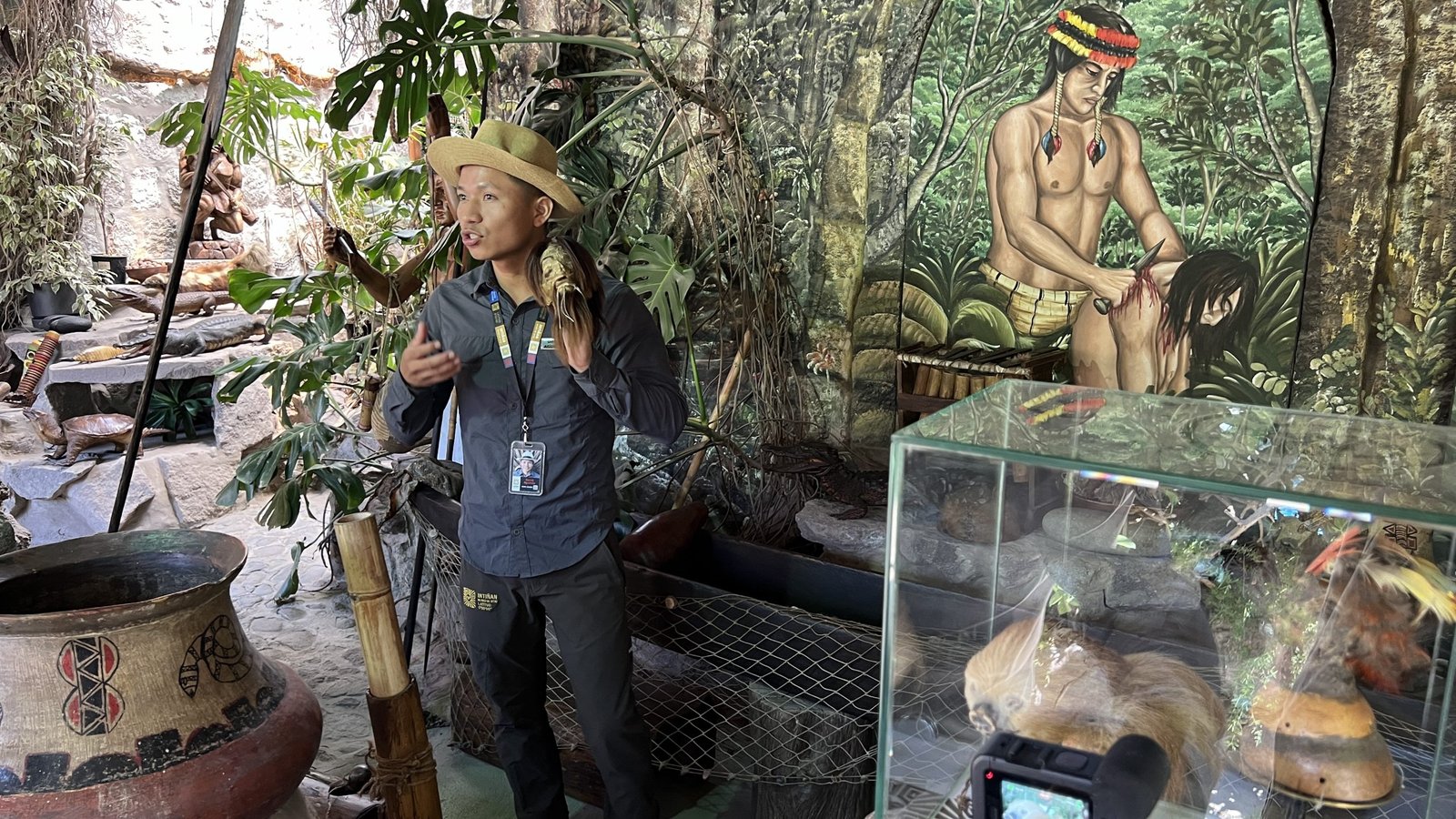
My guide, David, is Kichwa, an Indigenous group in the Amazon rainforest. He takes me through the park’s various exhibits depicting Ecuador’s different tribes and customs, including shrunken heads made by the Shuar people.

“The indigenous group from Ecuador would behead their enemies and shrink the heads to capture the spirit of the deceased and prevent them from seeking vengeance,” David explains.
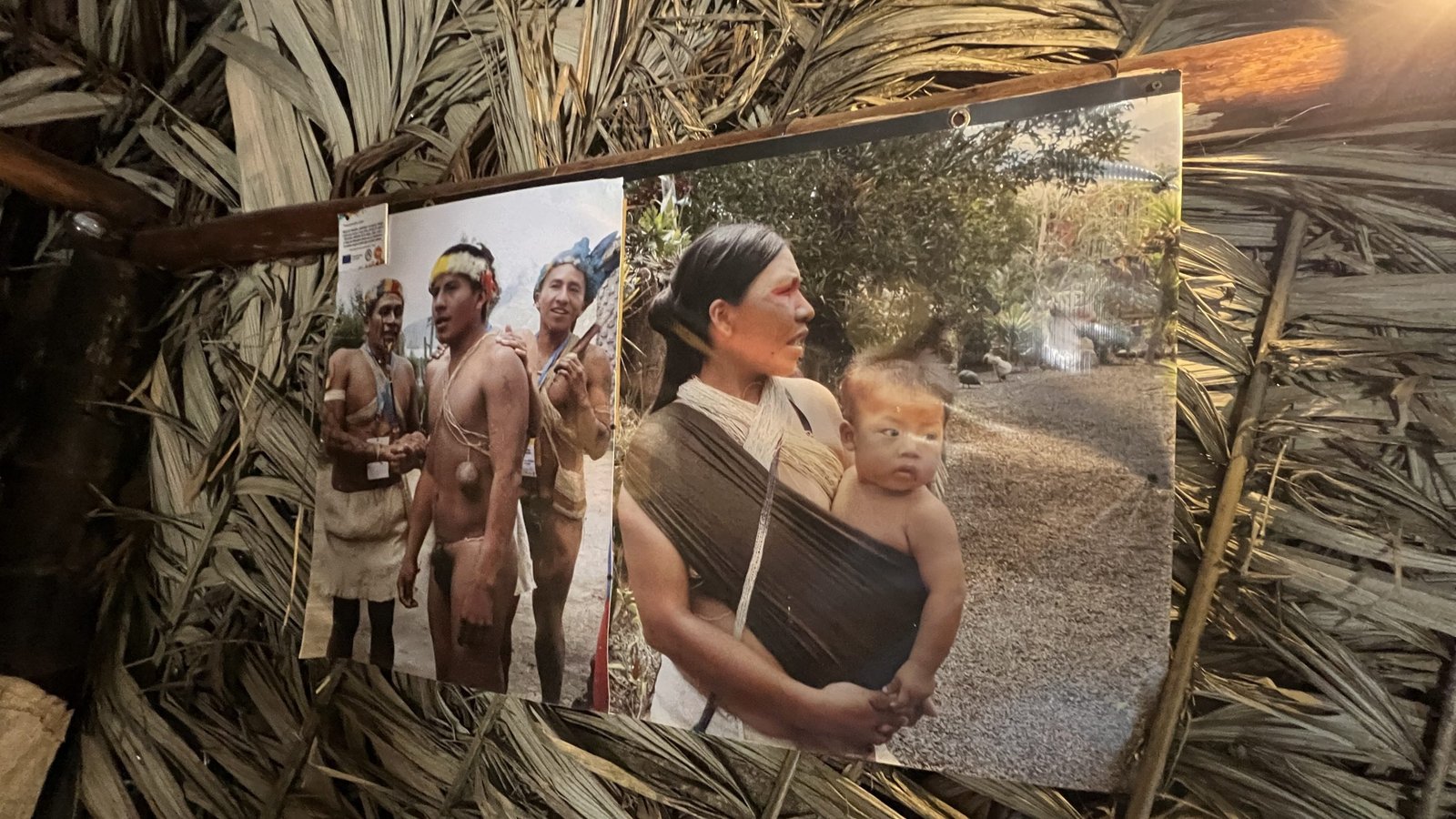
Other exhibits focus on the Worani tribe, which is considered one of the last tribes not in contact with the outside world. “Worani means free people, and they still live in the jungle and survive by hunting and fishing. The Worani are recognizable by their red face painting.”
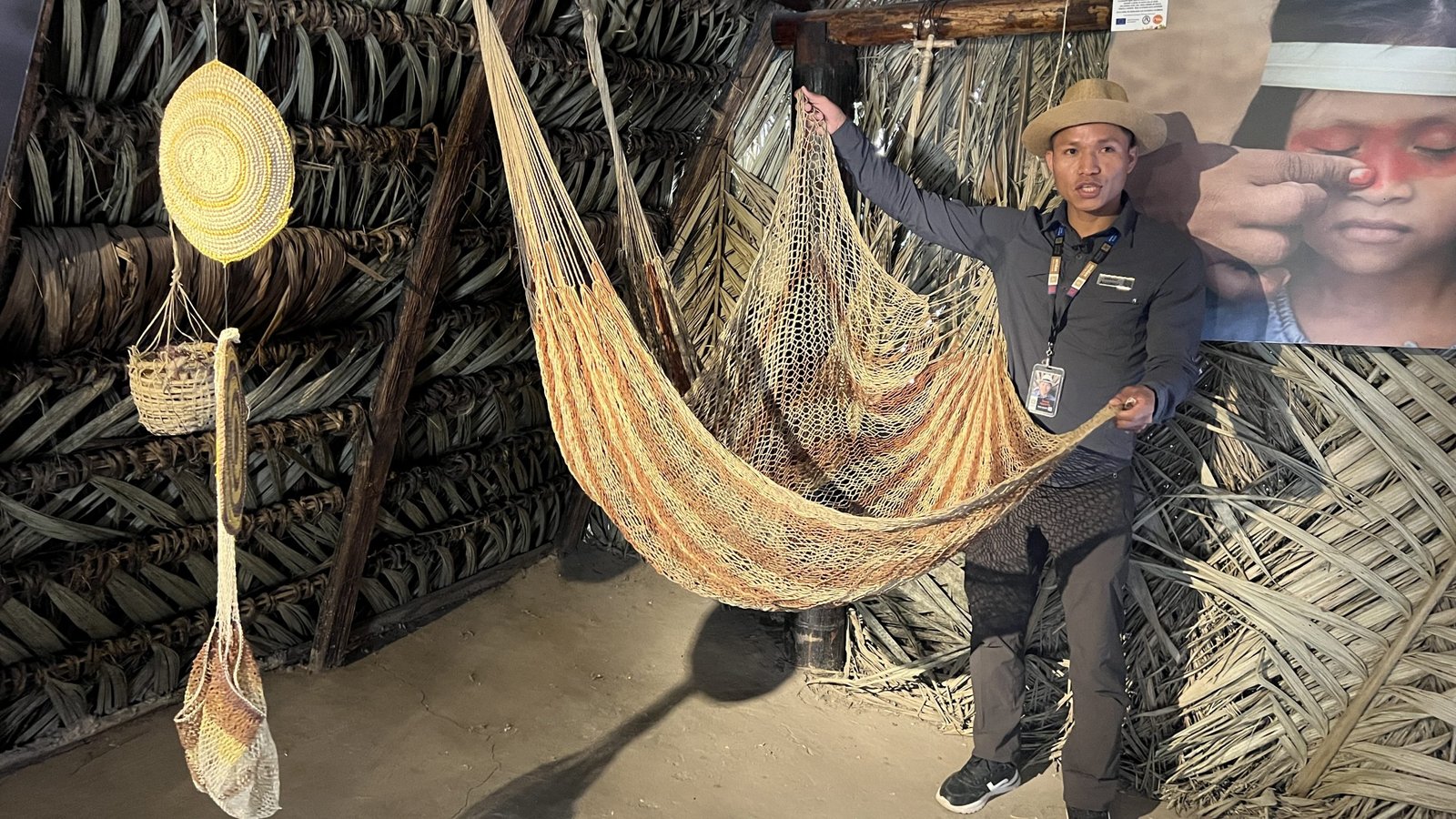
2. Mitad del Mundo Monument
We head to the Mitad del Mundo monument, the museum’s main attraction. The monument stands on the equator line marked on the ground. Mitad del Mundo is not precisely at the center of the world. GPS measurements placed the equator slightly north of the monument by approximately 650-1,000 feet.
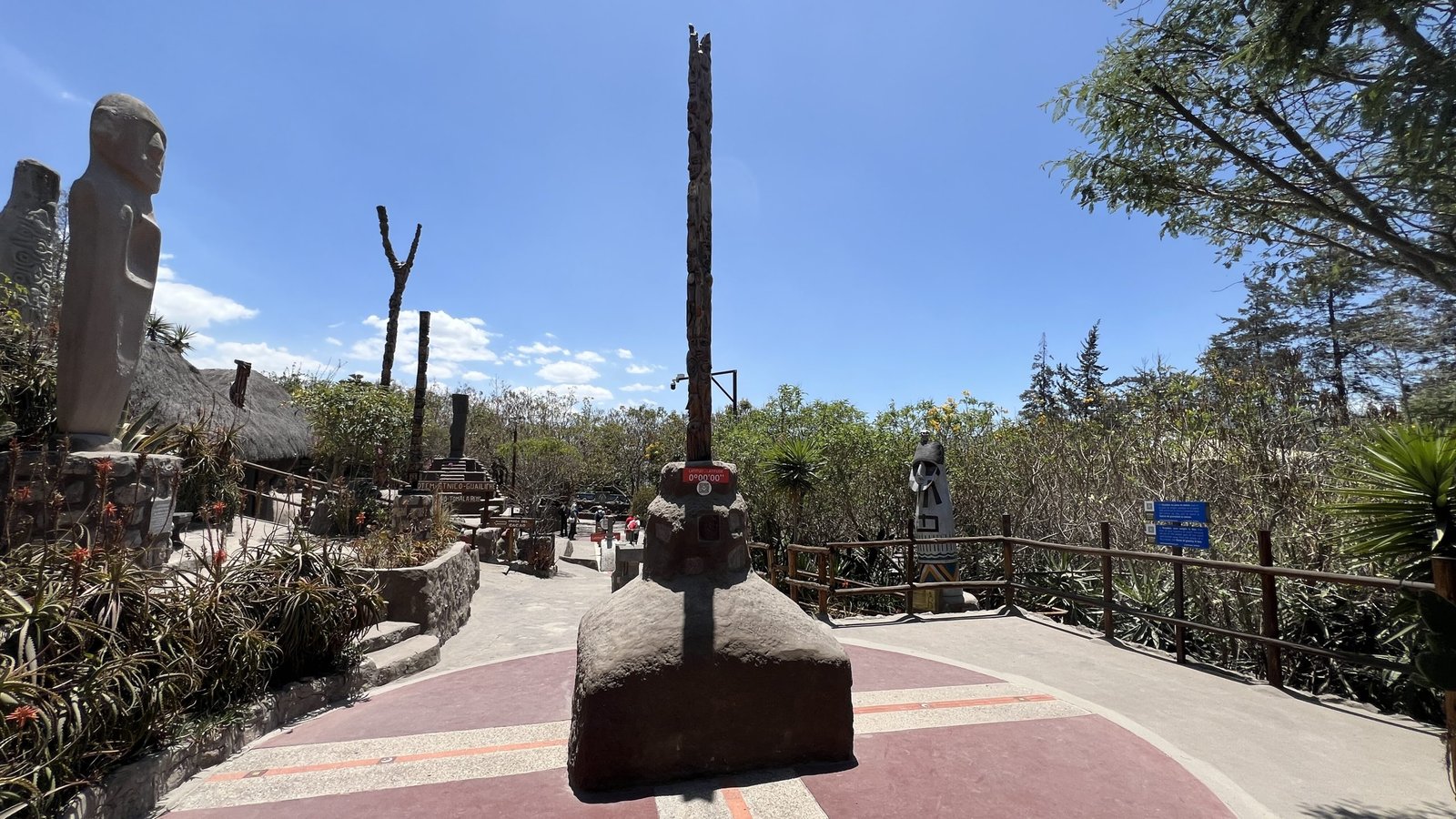
David challenges me to close my eyes and walk the line. “As you walk the line, you will experience how gravitational forces pull you to the north or south, making you unsteady.” With my eyes shut, I try walking heel to toe with my chin up, and it feels like walking on a wobbly high wire. I open my eyes to discover that I stepped way off the line, pulled by unseen forces. It was a fascinating experience to feel the effects of gravity at the equatorial line.
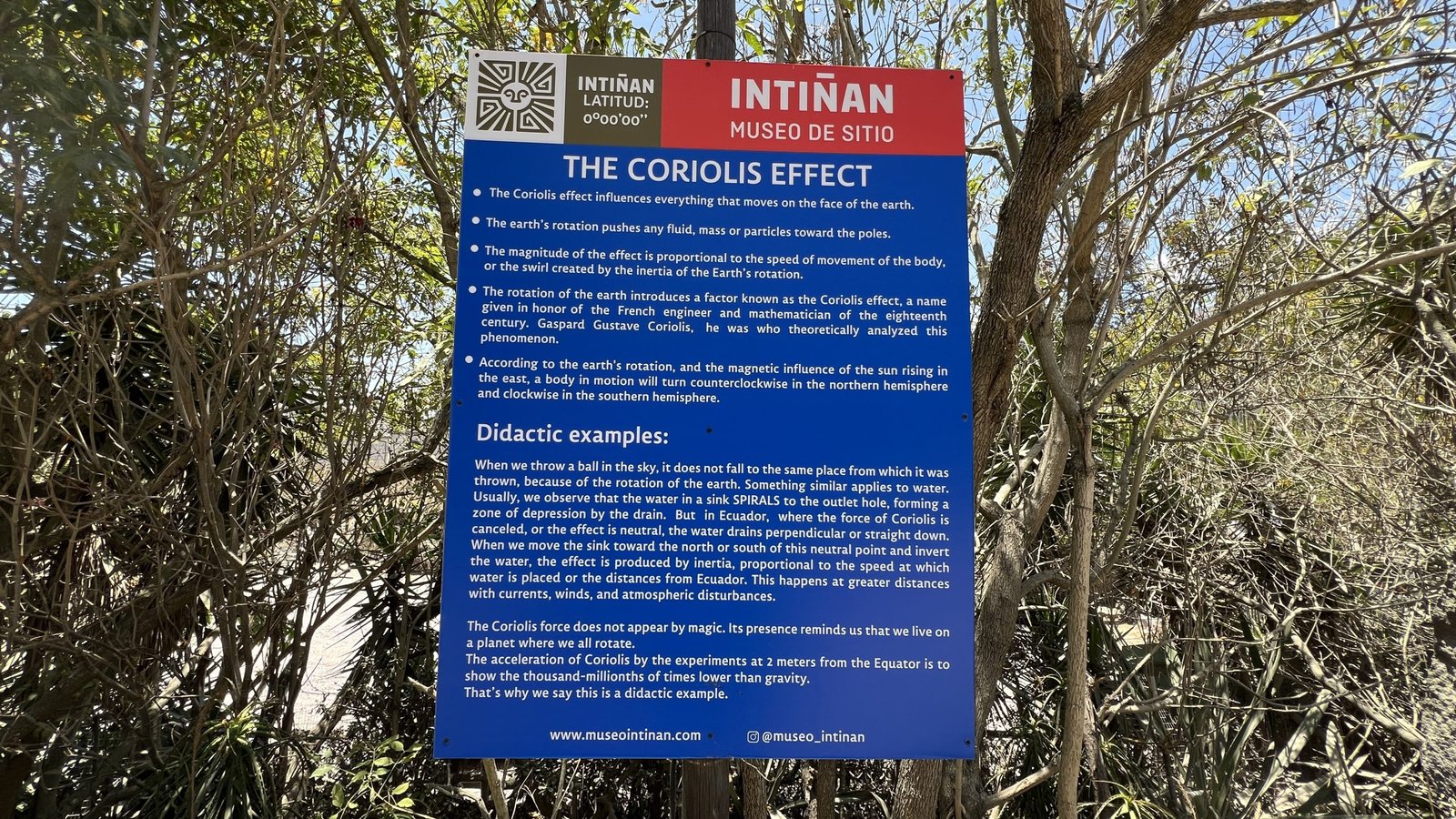
Next, I witness the equatorial phenomenon of the Coriolis effect as David pours water into a bucket from both sides of the equator, and we watch it drain. The Coriolis effect is most substantial near the poles and weakest at the equator.
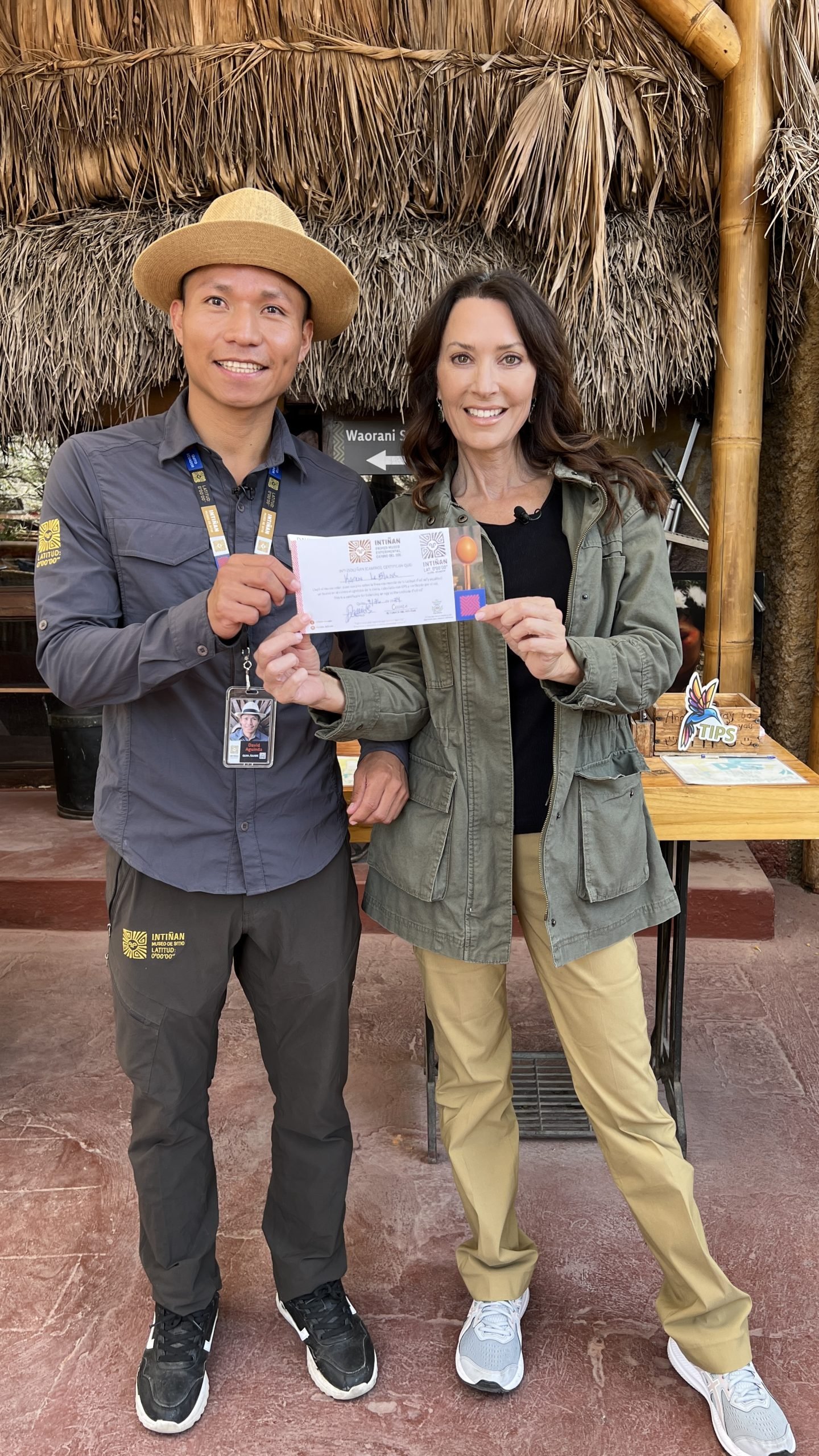
It causes fluids to deflect to the right in the Northern Hemisphere and the left in the Southern Hemisphere. I end my visit with a souvenir passport that designates me as an honorary “egg master” for balancing an egg on a nail at the equator. Full disclosure: David had to help me, but I appreciate the acknowledgement of my efforts.

A Scientific Perspective: Quitsato Solar Museum
I visited the Quitsato Solar Museum in Otavalo, a more scientific and research-based presentation of the equator that ties to Ecuador’s cultural identity and the cosmos. The main attraction is a large sundial tube you can walk inside at the equator line, located at latitude 0º 0′ 0” and verified by the Military Geographic Institute and the National Society of Professional Surveyors of the United States.
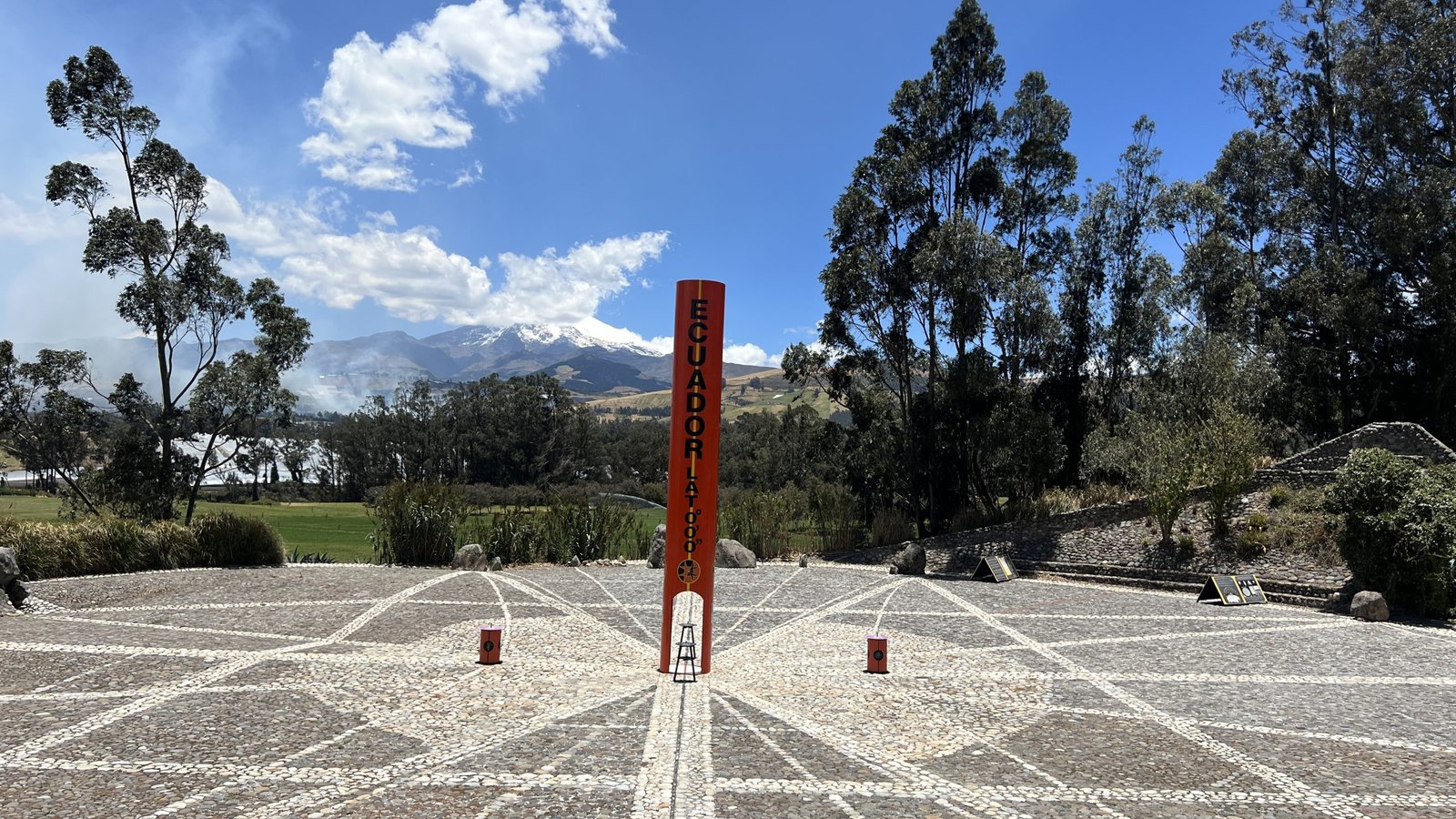
The museum has an exhibit that stimulates how we would see the cosmos from the equator. The equator is the only location that offers a complete view of the galaxy. The ceiling details the constellations with vantage points synced with a map of the earth below.
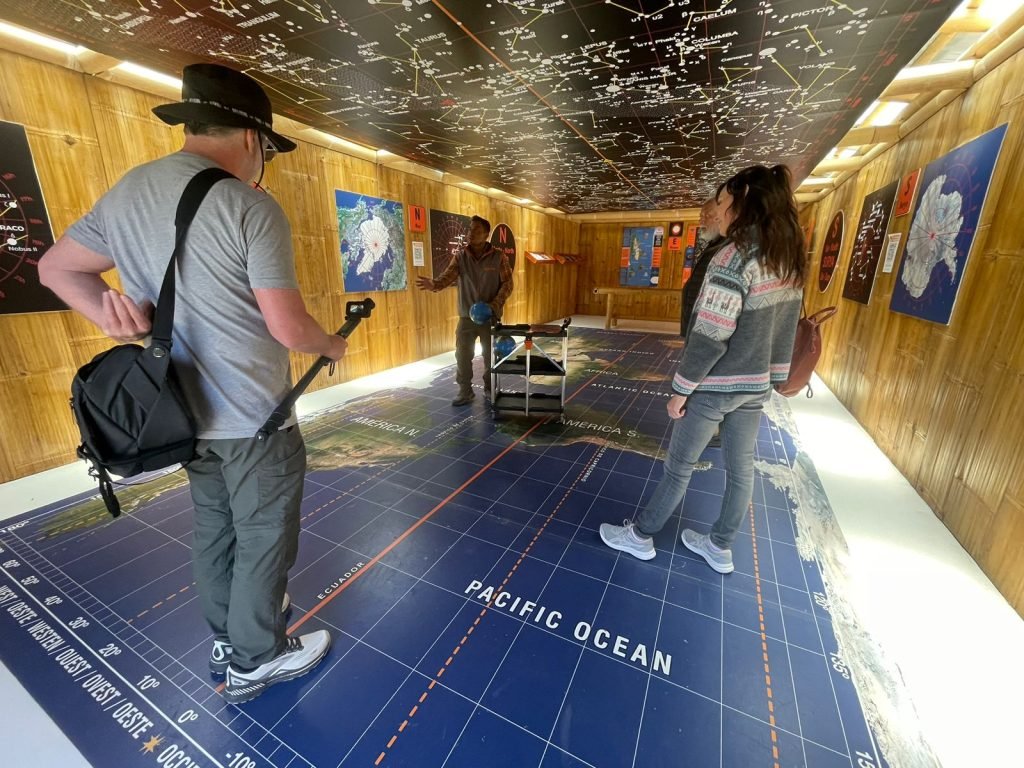
My guide, Manuel Coyaguillo, explains the museum’s research-based paradigm shift in geographical orientation in an exhibit that syncs the stars with their corresponding view from Earth. “The Oriens Project, a research project, reframes the conventional orientation of the earth depicted in maps by North and South to an orientation of East or “orient” where the sunrises.
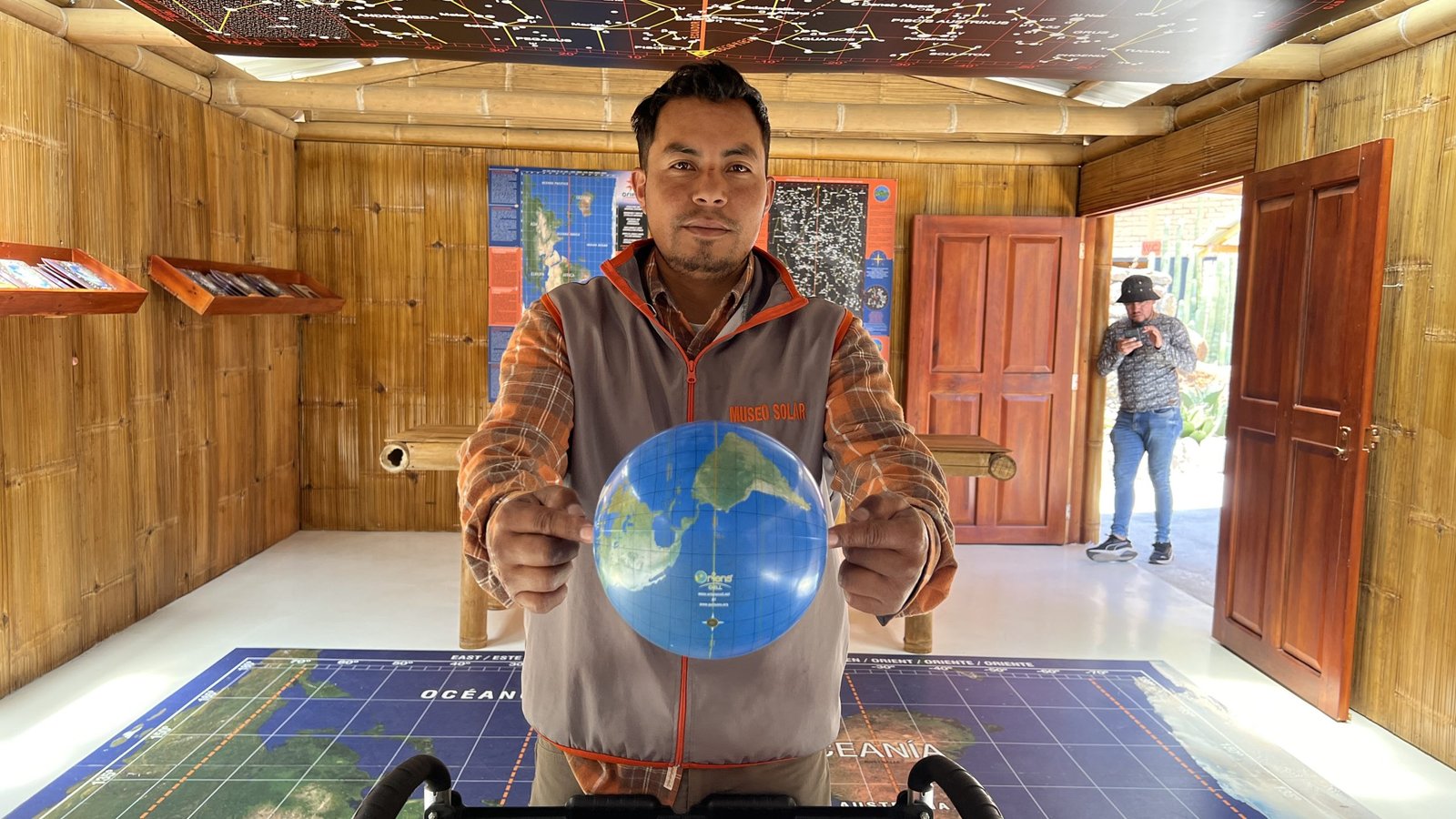
Equinoxes: Celebrating Balance at the Equator
I’m traveling through Ecuador during the September Equinox, which marks Spring, so the country was in a celebratory mood of renewal, with many indigenous communities conducting ceremonial rites. The museum explores how equinoxes are important in Andean indigenous rituals and set agricultural calendars or growing seasons.
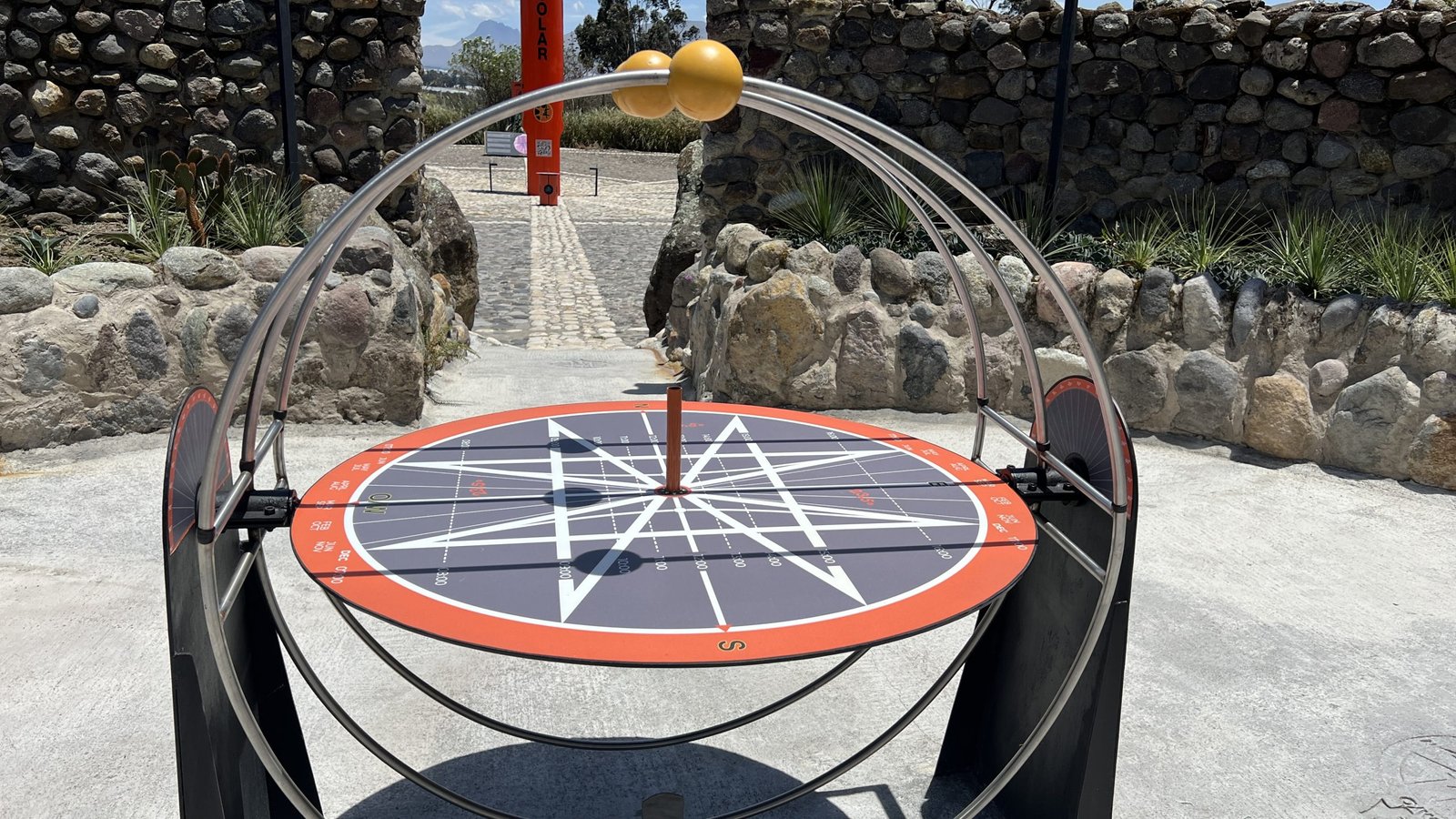
One of the most fascinating phenomena tied to the equator is the equinox, which occurs on March 21 and September 23. During these days, the Earth experiences equinoxes when the sun rises exactly in the east. Only on these two days will the sun visibly travel the equatorial line. At noon on the equinoxes, when the sun is positioned directly overhead at the equator, it doesn’t cast shadows. Inside the sundial, a central marker illuminates tracking the phenomenon.
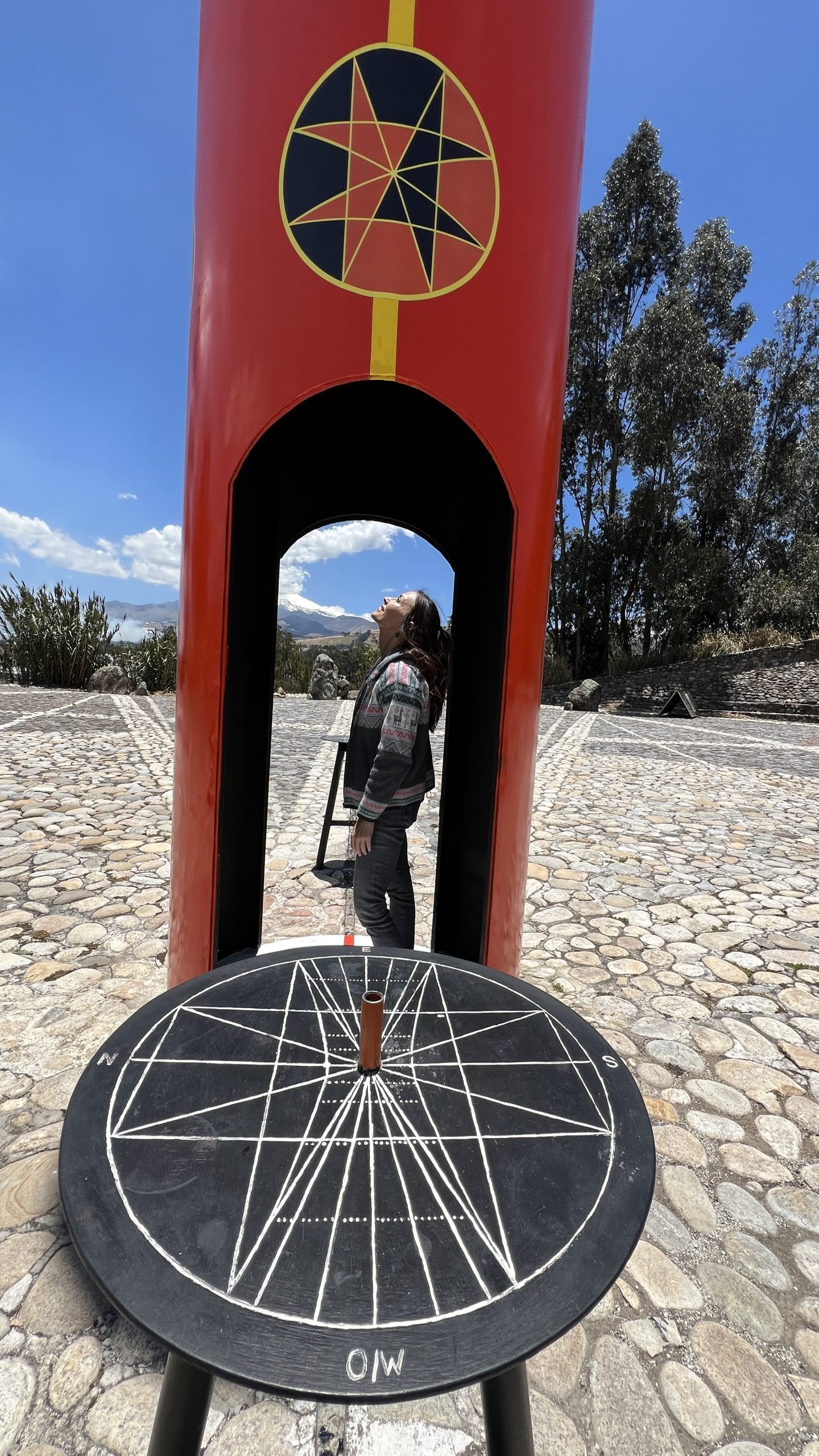
Ecuador’s Unique Climate and Agricultural Advantages
The various positions of the sun throughout the year determined ancient agricultural calendars and provided knowledge of the climate and seasons. Ecuador’s position at the equator provides equal hours of daylight and darkness. Each day, the sun rises at 6 a.m. and sets at 6 p.m creating a seasonless climate. Instead of four seasons, Ecuador experiences only rainy and dry seasons, making it an ideal environment for agriculture.
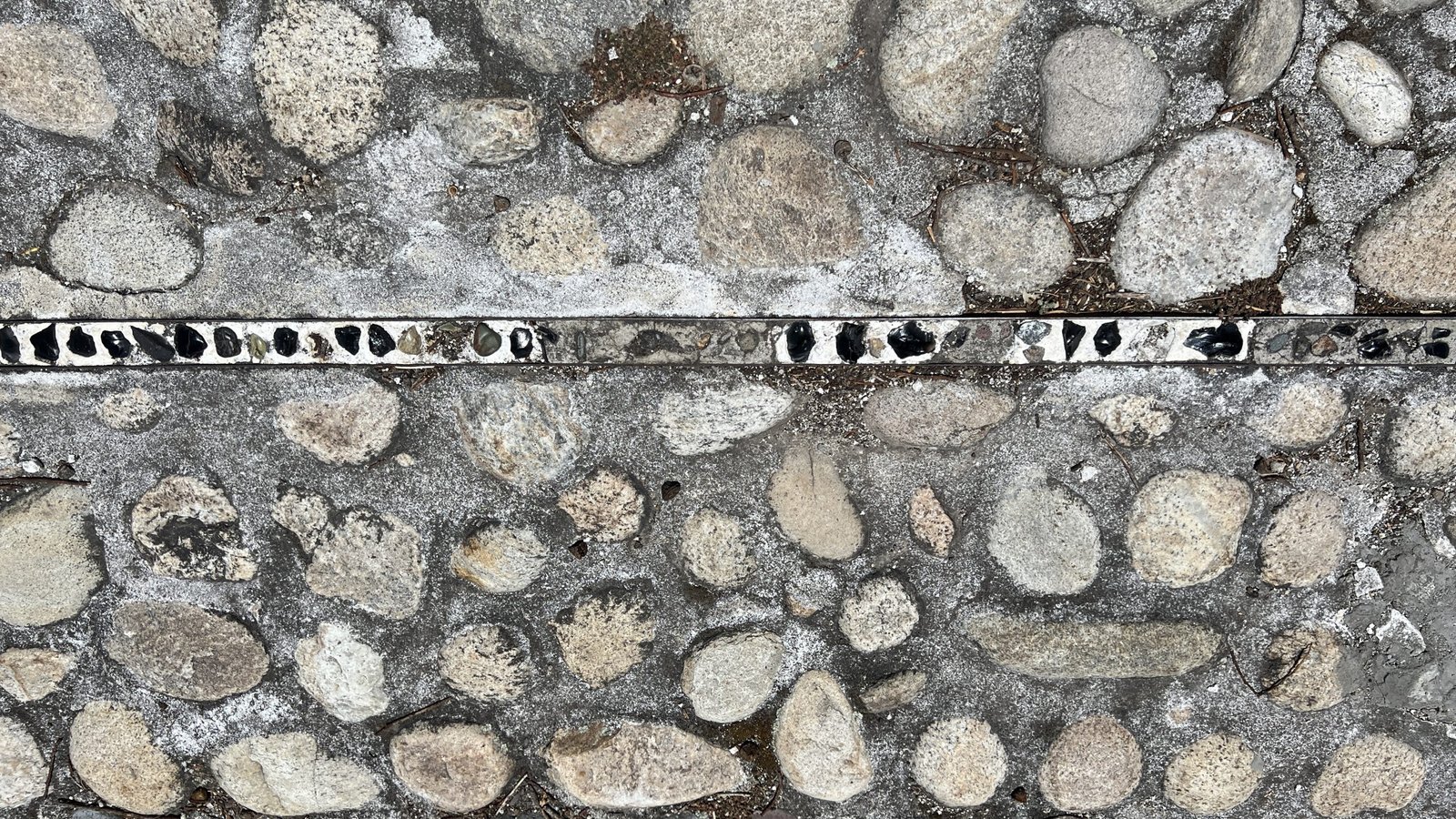
Roses, in particular, thrive here, and Ecuador is known for producing some of the world’s most beautiful flowers.
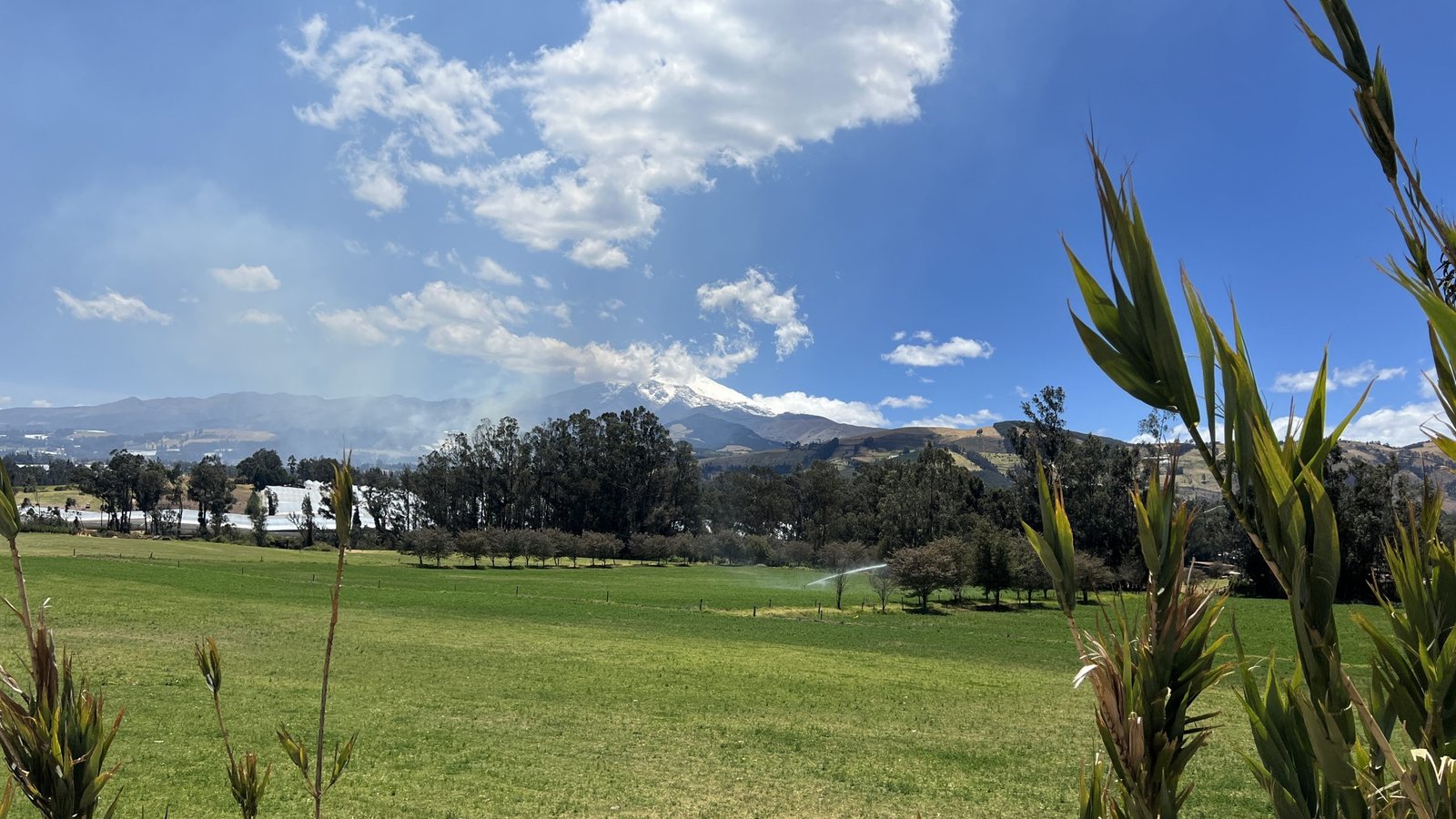
Ecuadorians view their country based on the principles of equilibrium and reciprocity, where balance resides in opposing forces of nature. Visiting Ecuador’s equator line is a physical manifestation of this cultural belief.
Final Thoughts
Ecuador’s equator line is not just a geographic marker- it is a representative of equilibrium, technology, and cultural ancestry. Everything from the fun learning displays at the Intinan Solar Museum to the impressive scientific accuracy of the Quitsato Solar Museum, the equator line has something for all of us. The airplane standing in the middle of the earth will draw the attention of gravity, the story being told is filled with ancient civilization and the unique nature of the universe navigation.
So, if anyone tries to primly ask, ” which city in Ecuador lies on the equator?” understand that the reply is more than just a position- it is a trip toward the center of the earth.
FAQs About the Equator Line in Ecuador
-
Is Ecuador near the equator?
Yes, Ecuador is not just near the equator—it is named after it! The equator line runs directly through the country, making Ecuador one of the few places in the world where you can stand in both the Northern and Southern Hemispheres at the same time.
-
Where is the equator line in Ecuador?
The equator line in Ecuador runs through several regions, including the capital city, Quito. Key locations to visit include the Intiñan Solar Museum, the Mitad del Mundo monument, and the Quitsato Solar Museum in Otavalo, which is GPS-verified to be at latitude 0° 0′ 0″.
-
What city in Ecuador is on the equator?
Quito, the capital city of Ecuador, is the most well-known city near the equator. It serves as the gateway to equatorial attractions like the Mitad del Mundo monument and the Intiñan Solar Museum. These sites are just a short drive from Quito’s city center.
-
What is the equator line, and why is it significant?
The equator line is an imaginary line that divides the Earth into the Northern and Southern Hemispheres at 0° latitude. In Ecuador, it holds cultural, scientific, and historical significance. It’s a place where you can experience unique phenomena like reduced gravity, participate in interactive experiments, and learn about the indigenous and scientific history tied to the “middle of the world.”
Plan Your Visit: Book Tours to Explore the Equator Line in Ecuador
To truly experience the magic of the equator line in Ecuador, I highly recommend booking your tours here. It’s the best way to explore iconic spots like Mitad del Mundo, Intiñan Solar Museum, and Quitsato while learning about the science, culture, and history that make this destination so unique!
If you want to take it a step further and experience magical Ecuador and the Galapagos the Art Experiences way, check out their incredible travel offerings. They provide a once-in-a-lifetime journey that not only creates unforgettable memories but also leaves a positive impact on local communities, the environment, and yourself. Learn more at Art Experiences Travel Ecuador.
Explore More Posts About Ecuador
How Microentrepreneurship Empowers Ecuador’s Culture Bearers
5 Best Hotels in Quito Ecuador
Quito School of Art: Ecuador’s Unique Religious Art Legacy
Is Quito Safe for Tourists? What You Need To Know
